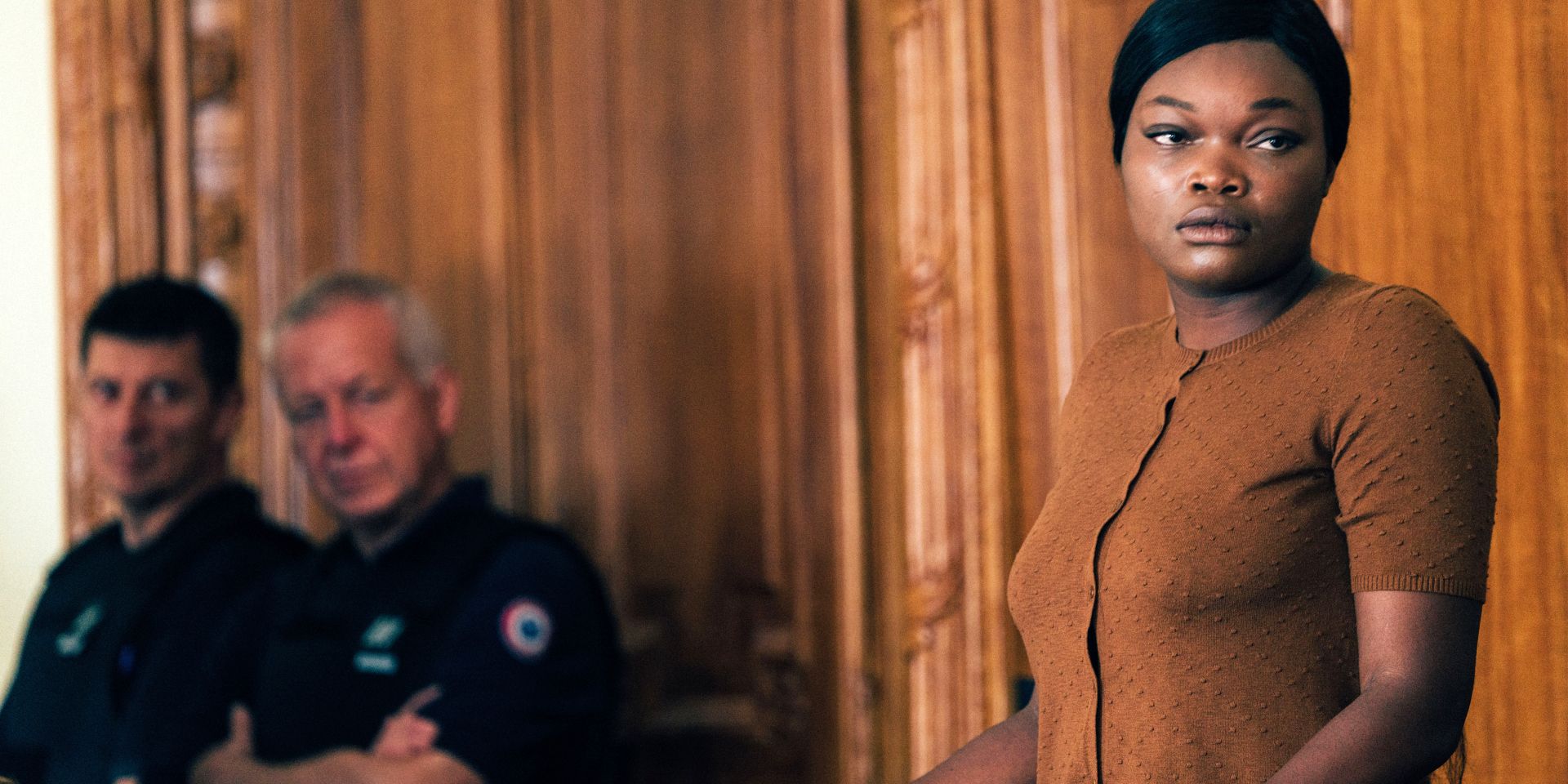The central aspect of French filmmaker Alice Diop’s fiction-feature debut, Saint Omer, is an unfathomable crime: A mother left her 15-month-old daughter on a beach to be swept out to sea, resulting in her death. It is inspired by a real case that made headlines in France and abroad, the trial for which the director actually attended. While the film is interested in the woman who committed the act, it primarily follows a character in Diop’s observer position, and its driving question is not, as it might’ve been in other projects, “How does one make any sense of senseless tragedy?” Instead, Saint Omer asks, “What if an unfathomable crime isn’t so unfathomable after all?” It is a heavy line of thinking that leads to no easy answers, but which Diop follows anyway, with enveloping, patient intent. Viewers willing to give it the same, almost spellbound focus the protagonist gives this case will find it a compelling meditation on things as wide-ranging as racial otherness, fraught mother-daughter relationships, and the real-world slipperiness of concepts like truth and justice.
Rama (Kayije Kagame) is a professor and novelist of Senegalese descent who travels from Paris to the commune of Saint-Omer for the trial of one Laurence Coly (Guslagie Malanga) for infanticide. The country is taken with this case for its singular characteristics — Laurence, who has confessed, pleads not guilty after claiming to have been under the influence of witchcraft. Rama intends to use it as the basis for a new book, drawing a parallel to the mythological tale of Medea. But as she listens to Laurence’s testimony, she is instead struck by many parallels with her own life. The defendant, a Senegalese immigrant, came to France to study and become an academic. She had a relationship with a white Frenchman, as Rama does, and a difficult history with her mother, as Rama also does. The more of Laurence’s life is laid bare, the more Rama finds herself able to understand her, until all that’s left is the one horrific decision that’s supposed to be totally incomprehensible, which makes Rama’s apprehensiveness about being four-months pregnant all the more troublesome.
Courtroom dramas are deceptively tricky to direct, as the setting doesn’t naturally allow for much movement, but Diop’s formal confidence embraces the static without becoming staid. The camera is usually locked in certain positions as Laurence and other witnesses are questioned by the Judge (Valérie Dréville), the prosecuting attorney (Robert Cantarella), and the defense attorney, Vaudenay (Aurélia Petit). These scenes play out like recreations of actual transcripts (those of the real case did indeed inspire the screenplay), save for a few injections of Rama’s perspective, but the director is not merely drawing on her experience as a documentarian. Saint Omer pulls meaning from precise, non-ostentatious choices. The angle at which the camera is positioned, for example: After first taking Laurence in from a diagonal, it moves to capture her head-on as Rama’s empathy for her grows. The film frequently cuts between speakers, but rarely on the start of a line, teaching the audience to focus more on how characters react than what is being said. These are not features that can be appreciated passively; Saint Omer requires its viewers’ full attention.
It also requires a great deal from its actors, who as a result of this editing style are given a certain thematic primacy. Take when Laurence’s former philosophy professor (Charlotte Clamens) questions the validity of her interest in Wittgenstein, because of his distance from her African culture. The camera first captures Laurence’s reaction, whose rageful stare melts into something like insecurity and defeat, threatening her determined composure. She sits, only to be told by the judge that she must remain standing; when she rises again, she is noticeably downcast. Then, as the professor sits back down next to Rama, the camera captures the protagonist’s disdainful glare, with her own anger simmering underneath body language that remains resolute. These acting moments from Malanga and Kagame are not only used to develop their characters, but also reflect the impact of racial prejudice and systemic oppression, the existence of which is shown, not told. Even though the court seems uninterested in how Laurence’s Blackness contributed to the social isolation the trial does establish, Saint Omer very much is, and it is through Malanga’s performance that viewers see how being othered, when coupled with her other life challenges, crushed Laurence’s spirit in a way it hasn’t Rama’s.
Diop’s film isn’t without its formal flourishes, particularly when it comes to exploring Rama’s childhood memories, but it is more interested in accumulating meaningful details than making clear, sweeping statements. As befitting its interest in academia, Saint Omer benefits from study, and audiences will find thinking on it afterwards turns up new connections. For example: Is Rama really identifying with Laurence, to the point where she is forced to imagine herself in that impossible scenario? Or does she see some of Laurence in her mother, who likewise immigrated from Senegal, and wonders how close she came to sharing the infant’s fate? Such is the state of questioning Saint Omer leaves its audience in that this possibility could reveal itself to a viewer days after they’ve seen it (as is the case here) — an indication of its quality as a work of art.
Saint Omer released in limited theaters in the U.S. on January 13. The film is 122 minutes long and is rated PG-13 for some thematic elements and brief strong language.


